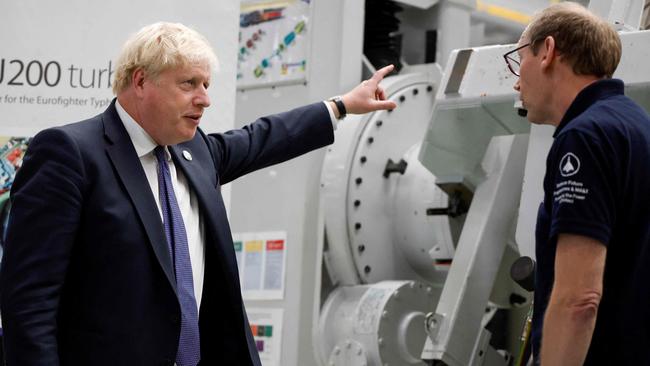Nuclear power back on the agenda for COP26
An increasingly desperate search for industrial strength alternatives to coal and oil is rapidly changing the outlook for uranium.

Business
Don't miss out on the headlines from Business. Followed categories will be added to My News.
An increasingly desperate search for industrial strength alternatives to coal and oil in the lead up to the Glasgow COP26 climate conference is rapidly changing the outlook for uranium.
Australian uranium miners have bounded ahead this year on the back of what might have been another passing burst of enthusiasm for the raw material that powers nuclear reactors.
But inside the last month a remarkable convergence of new commitments and recommitments to nuclear energy is extending investor interest in what had become a marginal commodity. Australia has roughly a third of the world’s uranium, but local interest in “yellowcake” had waned along with softer international demand since the Fukushima nuclear power plant explosion in Japan a decade ago.
Some professional investors see uranium as a re-emerging potential power source in the rush to decarbonisation.
Investment bank Morgan Stanley is bullish on the commodity with a $US49 a pound target for 2024 – it is currently around $US40.
Uranium-powered nuclear stations create carbon free energy, a factor that may well become a crucial piece of the energy jigsaw as planners try to match political promises set to be made at the Glasgow climate conference starting on October 31.
Over the last 12 months uranium spot prices have rise strongly, moving from under $US30 at the start of the year, though retracing a little in recent days. Moreover, a powerful lift in the share price of leading uranium players such as ASX-listed Paladin Energy suggest that changed attitudes among leaders of developed economies is underpinning the renewal of investor interest.
Paladin Energy is now valued at more than $3bn and is up fivefold over the last 12 months, and a string of smaller uranium players are also making big profits for investors.
Perhaps the biggest swing factor in changing attitudes has been Japan, the source of the last major nuclear accident which in turn flattened the uranium for almost a decade.
Just days ago Japan’s new prime minister, Fumio Kishida, repositioned the government suggesting “it is crucial we restart our nuclear plants”.
Meanwhile, almost in unison a string of developments in Europe combined to force a very recent reappraisal of uranium as a commodity with a changed future.
● In the UK, where 20 per cent of power is nuclear, PM Boris Johnson is set to rebuild the nation’s nuclear energy commitment prior to the Glasgow conference. The UK government is expected to match a private consortium’s funding to build 16 new “mini reactors” in conjunction with the Rolls Royce Group.
● In France, where 70 per cent of power comes from nuclear, last week President Macron confirmed the role of nuclear in the country’s long range electricity plans and announced a $US1bn plan to build the first mini reactor.
● Even in Germany, the centre of antinuclear activism for decades, things are changing rapidly. On October 14 a set of 25 leading public figures launched a campaign for the country to change course and reverse a plan to close all of its nuclear power stations. The group says Germany is in danger of missing its climate targets if the “2022 nuclear phase out plan” goes ahead.
For analysts the key issue of whether nuclear power and uranium really will have a renaissance as countries try to match emission obligations.
Tim Buckley of the Institute for Energy Economics remains unconvinced: “All energy prices are lifting just now but nuclear power is a terribly expensive form of power with huge construction costs that only a country such as China is willing to make.”
Vivek Dhar, mining and energy commodities analyst at Commonwealth Bank, issued a very sceptical report on the sector earlier this year but is keeping an open mind.
“I haven't crunched the numbers in terms of the incremental demand from these new policy announcements, but if nuclear power manages to gain traction as a viable solution to decarbonisation in the power sector, it can lead to more economies embracing the technology,” Dhar suggests.
More Coverage
Originally published as Nuclear power back on the agenda for COP26





